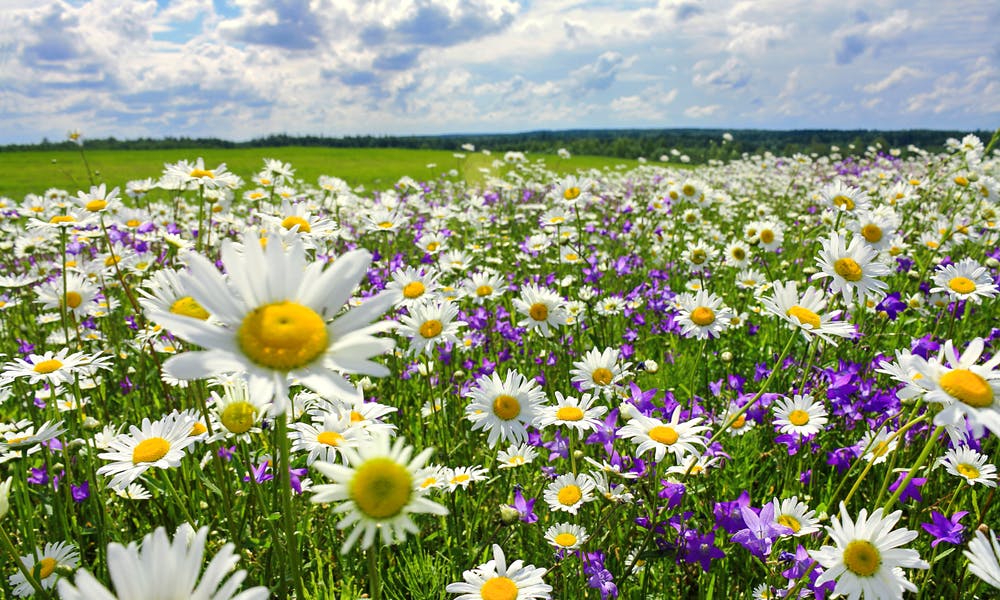Here is the end of winter and it is time to think about arranging your garden as you wish. The annual flowers are a choice for those who want variety each year, other kinds of floral arrangements, or new associations between plants. These are not demanding, they are easy to plant and care for, and many of them can be planted directly in the garden. The diversity of volumes and heights of the bushes, shapes, and colors of the flowers are so great that it is often difficult to choose. Here are some ideas that you might be pleased to put into practice. You can read in this article about:
* What are summer flowers
* What is the difference between annual and perennial plants
* Annual flowers for your garden
What Are Summer Flowers
Summer flowers are those plants that usually are sown in spring, bloom in summer, and die in late autumn. Therefore, their life cycle is carried out in full during a maximum of three seasons. They are plants of amazing diversity in terms of their sizes, shapes, and colors of the flowers. Summer flowers are very suitable if we want every year our garden to have a different architecture, with various colors and shapes.
What Is the Difference Between Annual and Perennial Plants
Perennials are those plants sown once and then, year after year, they can bloom from the same bulbs as long as you ensure that these bulbs do not freeze in the frosty season. By the time they reach maturity, they grow a little slower than annual plants, and many varieties do not even bloom in the first year of vegetation. Among these plants, you can also find biennial plants that live only two years.
Among these perennials, there are plants that are quite fragile and their bulbs do not withstand winter, so, next spring they should be planted again. However, being perennial, they should grow from the same bulbs. The annual plants are planted in the spring, before the last frost and bloom spectacularly all summer, until late autumn. Without pretending to be exhaustive, we offer some examples of such plants in the next section that can help you create a spectacular garden during summer.
Annual Flowers for Your Garden
The Mexican sunflower (Tithonia) has warm yellow or orange colors, prefers sunny places, loves the heat and blooms all summer and early autumn. It branches, so the plants need to be placed about 2 or 3 inches apart. It grows well in poorer soils if these are well-drained ones. The watering should not be exaggerated, as they are not very big water lovers. You should clean the plant from the dried flowers to stimulate blooming.
Marigold (Calendula officinalis) is one of the annual species of flowers, rarely biannual, richly branched, pubescent, with a strong balsamic odor. Marigold can be grown everywhere, without any problems of climate or soil. These flowers can give a special joy to your garden. They have bright yellow flowers and more than 50 varieties of marigold flowers are known. They grow best in bright sunlight and you have to be careful that the soil is well watered. Then, it should be well-drained. It is the only care that these flowers require throughout the summer.
Shasta daisy is known to come from northern Africa, but they have adapted well everywhere. Today, daisies are found worldwide in both hemispheres. Daisies are perennial plants with tall, grassy stems, with flowers placed on a single stem and with a single flower at the top. Although they are not scented, daisies are often visited by bees and butterflies. Thus, they might be the right addition to your garden if you seek to attract beautiful insects. The hairy, simple stalk ends with a single inflorescence. The intense green leaves emphasizes the beautiful, white flower with a bright yellow medium.
Daisies need a lot of sunlight when planted in the garden. Although it is a plant that can withstand the cold spring nights, it does not support the shade at all. Without the sun, the flowers either do not grow nor can be deformed. In the absence of intense sunlight, the daisy does not bloom, and excessive moisture leads to premature aging of the plant and the attack of fungal diseases. Plants need very well-drained soil. You can sow them in a sandy area, or even in poor rocky soil because the daisy only grows in soil that doesn’t retain the water. It needs nutrients, so in the garden, the soil should have to be fertilized intensely during the period when the buds are formed. Ideally, you should choose a fertilizer rich in potassium and phosphorus.
Garden peonies are the stars of May: colored, cute, fragrant, and loved not only by humans but also by bees and butterflies. Garden peonies are extremely decorative, resistant, and have the advantage that these flowers are blooming year after year with minimal care.
Garden peonies are most often pink, but there are also white, red, or yellow peonies. The peonies of the garden have lush, tall, and relatively resistant flowers. Peonies are perennial plants that bloom from the beginning of spring until autumn for decades. If they are correctly planted in the right soil, the garden peonies grow on their own with rainwater, heat, and light. Garden peonies are an extremely resilient and a long-lived garden plant that has a long history. Besides, these flowering plants do not require everyday attention and care from you. Ideally, garden peonies are planted in early autumn, from September to mid-October. They may also be planted in early spring, but it is advisable to use seedlings in this case.
